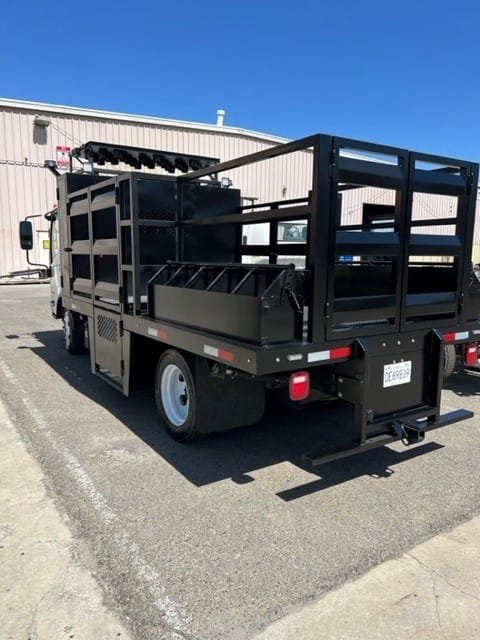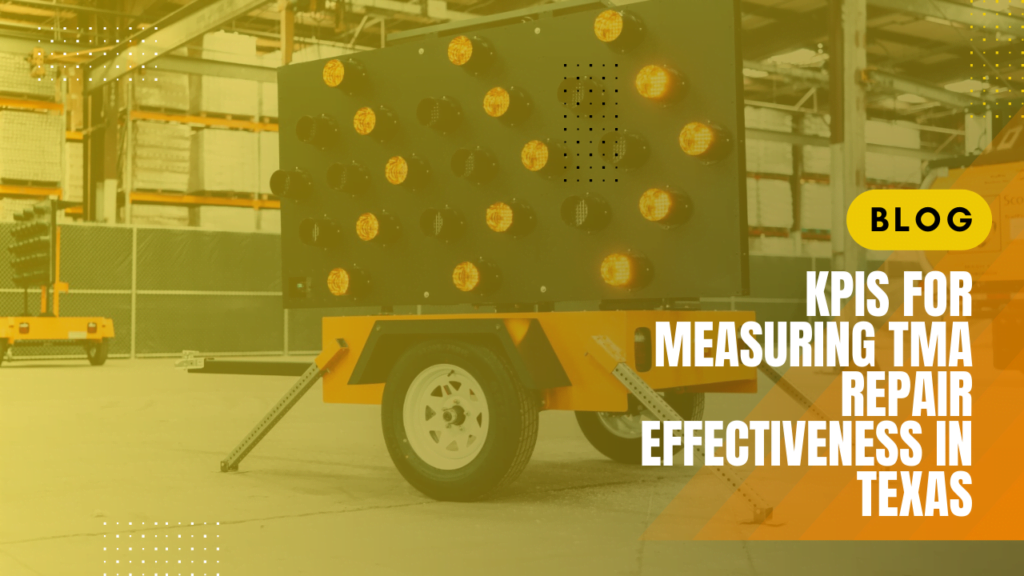Truck-mounted attenuators (TMAs) are essential for ensuring safety in work zones and protecting workers and equipment from vehicular accidents. Given their critical role, maintaining these devices in optimal working condition is paramount. Measuring the effectiveness of TMA repairs is crucial for safety, operational efficiency, and cost management. Here, we explore the key performance indicators (KPIs) that can be employed to assess the effectiveness of TMA repairs.

1. Repair Turnaround Time
Definition: The time taken from the moment a TMA is reported for repair to the time it is fully operational again.
Importance: Quick turnaround times are essential to minimize downtime and ensure TMAs are available for use when needed. This KPI helps in evaluating the efficiency of the repair process and identifying bottlenecks.
How to Measure: Track the duration from the submission of a repair request to the completion of the repair and compare it against established benchmarks.
2. First-Time Fix Rate
Definition: The percentage of TMA repairs completed correctly on the first attempt without the need for additional repairs or adjustments.
Importance: A high first-time fix rate indicates the competence and skill level of the repair team and reduces downtime and costs associated with repeated repairs.
How to Measure: Calculate the ratio of repairs completed on the first attempt to the total number of repairs over a specified period.
3. Mean Time Between Failures (MTBF)
Definition: The average time elapsed between subsequent failures of a TMA after repair.
Importance: MTBF provides insights into the reliability and durability of the repairs performed. A higher MTBF signifies longer-lasting repairs, contributing to better safety and reduced repair costs.
How to Measure: Track the operational time of TMAs between repairs and calculate the average over multiple units.
4. Cost of Repairs
Definition: The total cost incurred for repairing TMAs, including parts, labor, and any additional expenses.
Importance: Monitoring repair costs helps in budget management and identifying opportunities for cost-saving measures without compromising repair quality.
How to Measure: Sum up all expenses related to TMA repairs over a given period and compare against budgeted amounts.
5. Downtime Due to Repairs
Definition: The total time a TMA is out of service due to repairs.
Importance: Minimizing downtime is critical for maintaining operational efficiency and ensuring the continuous availability of safety equipment in work zones.
How to Measure: Record the duration each TMA is unavailable due to repairs and aim to reduce this time over successive repair cycles.
6. Quality of Repair
Definition: The adherence of repair work to established quality standards and the absence of defects post-repair.
Importance: High-quality repairs ensure the safety and reliability of TMAs, reducing the likelihood of future failures and accidents.
How to Measure: Conduct regular quality inspections and audits post-repair, and record the incidence of defects or non-compliance.
7. Customer Satisfaction
Definition: The satisfaction level of internal and external stakeholders with the TMA repair process and outcomes.
Importance: High customer satisfaction reflects the overall effectiveness of the repair process, including communication, timeliness, and repair quality.
How to Measure: Gather feedback through surveys or interviews from those who interact with or rely on the TMAs.
8. Compliance with Safety Standards
Definition: The degree to which repaired TMAs meet relevant safety and regulatory standards.
Importance: Compliance ensures that TMAs are safe to use and meet legal requirements, thereby avoiding penalties and enhancing safety.
How to Measure: Perform regular compliance checks and audits against relevant safety standards and regulations.
Conclusion
Monitoring these KPIs provides a comprehensive view of the effectiveness of TMA repairs, enabling continuous improvement and ensuring that TMAs perform their critical safety functions reliably. By focusing on repair turnaround time, first-time fix rate, MTBF, cost of repairs, downtime, quality of repair, customer satisfaction, and compliance with safety standards, organizations can optimize their repair processes and enhance overall safety in work zones.
For your effective TMA repairs, visit us HERE




